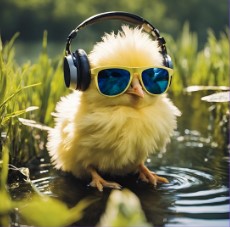Hey Guidesters! Welcome back to part two of our Five Senses Series. While these are the less-commonly-used senses, here are some ways to use them to elevate your writing. Read to the end to find three creative challenges!
***************************************************************
Smell
Now this is a really interesting sense. It’s very rare to see in writing, compared to sight and sound, but it’s truly powerful. Everyone should use the sense of smell more! Have you ever walked into someone’s house and noticed its unique scent? Whether it’s the food they cook (mmm, freshly-baked cookies), the type of cleaning products they use, or the animals they have, each home’s smell can bring up memories you associate with it.
Scents can transport readers into the moment. Maybe your character smells a pumpkin spice latte, and remembers a cozy sleepover at her grandparents’. Maybe another smell, like chlorine brings up negative memories of falling into a pool. How you describe smells can connect with readers, and stir up feelings. These tiny details make a big impact on your writing’s mood.
Take some examples:
The church smelled of crisp air-conditioned air and new banknotes.
Doesn’t that just show the formality of the space?
And here’s a really gross example:
Outside smells like vaporized dog poop.
Ugh! Not only is it unique, but it gives a really vivid idea of how awful the air smells.
Try this: whenever you have a moment, try to name all the smells around you. If you don’t smell anything, look around at objects and imagine what smells they could hold (or if it’s safe to do so, give them a little sniff.) This will help you get tuned into your surroundings and help you be able to infuse scents into your writing.
Touch
Ahh, touch, physical feelings—another important but underused sense. Texture, temperature, and pressure all help bring writing to life.
Let’s jump right in with some examples:
- I lean against the solid oak tree, the ridges in the trunk cutting into my skin. A puff of wind blazes a trail of goosebumps across my skin.
- The scorched-gold stalks in the cornfield reminded her of her dad’s prickly, stubble-covered face.
- Grim lines pinched Mom’s cheeks, her too-tight grip chafing my wet skin.
- The water poured over her head, and she sucked in a breath. The cold made her skin tingle and made her blood sizzle.
Hmm, isn’t it much easier to connect with the scene when you know just how it feels? Touch makes a difference in action scenes, too. Is your character sprinting barefoot across hot pavement? Feeling the scratch of wool against their neck? Shivering as icy raindrops soak through their jacket? These details add immersion and help readers feel what the character feels.
Think about ways to incorporate more physical feelings into your writing. Remember, as I always say (haha!) it’s the tiny, unique details that often have the biggest impact.
And finally . . . Taste
I think this is one of the hardest senses to incorporate into writing. Usually, we only think about taste when eating, and we don’t have eating in every scene. However, taste can be used in unexpected ways. Ever read lines like, “The air tasted like smoke” or “He accidentally bit his tongue, tasting the metallic tang of blood”? Describing taste outside of food is a creative way to bring this sense into writing.
Take this one: “Spring tastes like lemon cotton candy: sweet and light and zingy.” It’s not literal, but it captures the feeling of the season in a fresh, fun way!
Infusing creative descriptions of taste into your work can really make it stand out! And combining all the elements of the 5 senses will elevate your writing and make it so much more attention-grabbing.
Wow! This was a long post. Anyway . . . I hope it was helpful. If you’ve read this far, here are three challenges to build writing sensory scenes:
- Write a scene using only the senses of smell, taste, and touch.
- Write a scene with the pictured puppy exploring the world for the first time. Show its wonder/fear/excitement/confusion through its senses.
- Brainstorm a list of interesting smells and textures. Here’s an example to get you started: the smells of sun-dried sheets, orange peel, too-sweet Panadol pain-relief syrup and harsh bleach. The texture of smooth kernels, goopy slime, glossy magazines, and filmy windows.
Feel free to share your takes on these challenges in the story section, or in the comments! I’d love to see them! Happy writing, Guidesters!




4 thoughts on “The Five Senses: Smell, Touch and Taste | Writing Tips Series”
I love this!! You’ve done a great job explaining everything and it makes me want to write something with senses. Bravo!
Thank you! I was wondering if anyone read these, lol
This is so great! Thanks a million loonies (if they still have those in your part of the country)! I will be sharing this and give you proper credit.
Thank you! 😅